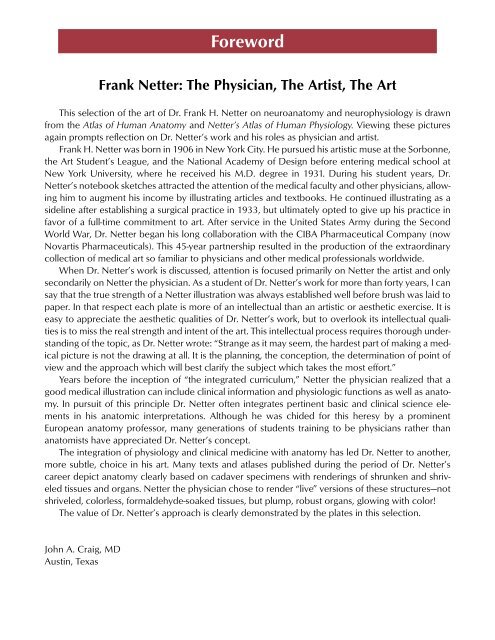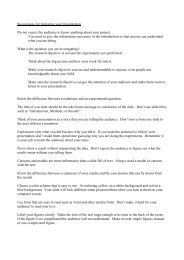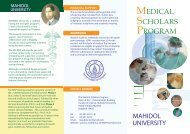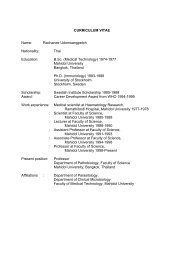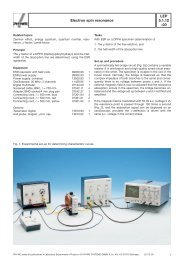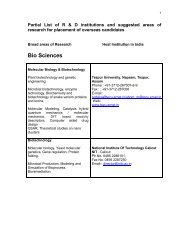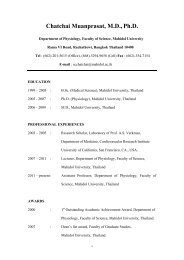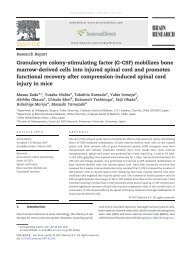Create successful ePaper yourself
Turn your PDF publications into a flip-book with our unique Google optimized e-Paper software.
Foreword<br />
Frank Netter: The Physician, The Artist, The Art<br />
This selection of the art of Dr. Frank H. Netter on neuroanatomy and neurophysiology is drawn<br />
from the <strong>Atlas</strong> of Human Anatomy and Netter’s <strong>Atlas</strong> of Human Physiology. Viewing these pictures<br />
again prompts reflection on Dr. Netter’s work and his roles as physician and artist.<br />
Frank H. Netter was born in 1906 in New York City. He pursued his artistic muse at the Sorbonne,<br />
the Art Student’s League, and the National Academy of Design before entering medical school at<br />
New York University, where he received his M.D. degree in 1931. During his student years, Dr.<br />
Netter’s notebook sketches attracted the attention of the medical faculty and other physicians, allowing<br />
him to augment his income by illustrating articles and textbooks. He continued illustrating as a<br />
sideline after establishing a surgical practice in 1933, but ultimately opted to give up his practice in<br />
favor of a full-time commitment to art. After service in the United States Army during the Second<br />
World War, Dr. Netter began his long collaboration with the CIBA Pharmaceutical Company (now<br />
Novartis Pharmaceuticals). This 45-year partnership resulted in the production of the extraordinary<br />
collection of medical art so familiar to physicians and other medical professionals worldwide.<br />
When Dr. Netter’s work is discussed, attention is focused primarily on Netter the artist and only<br />
secondarily on Netter the physician. As a student of Dr. Netter’s work for more than forty years, I can<br />
say that the true strength of a Netter illustration was always established well before brush was laid to<br />
paper. In that respect each plate is more of an intellectual than an artistic or aesthetic exercise. It is<br />
easy to appreciate the aesthetic qualities of Dr. Netter’s work, but to overlook its intellectual qualities<br />
is to miss the real strength and intent of the art. This intellectual process requires thorough understanding<br />
of the topic, as Dr. Netter wrote: “Strange as it may seem, the hardest part of making a medical<br />
picture is not the drawing at all. It is the planning, the conception, the determination of point of<br />
view and the approach which will best clarify the subject which takes the most effort.”<br />
Years before the inception of “the integrated curriculum,” Netter the physician realized that a<br />
good medical illustration can include clinical information and physiologic functions as well as anatomy.<br />
In pursuit of this principle Dr. Netter often integrates pertinent basic and clinical science elements<br />
in his anatomic interpretations. Although he was chided for this heresy by a prominent<br />
European anatomy professor, many generations of students training to be physicians rather than<br />
anatomists have appreciated Dr. Netter’s concept.<br />
The integration of physiology and clinical medicine with anatomy has led Dr. Netter to another,<br />
more subtle, choice in his art. Many texts and atlases published during the period of Dr. Netter’s<br />
career depict anatomy clearly based on cadaver specimens with renderings of shrunken and shriveled<br />
tissues and organs. Netter the physician chose to render “live” versions of these structures—not<br />
shriveled, colorless, formaldehyde-soaked tissues, but plump, robust organs, glowing with color!<br />
The value of Dr. Netter’s approach is clearly demonstrated by the plates in this selection.<br />
John A. Craig, MD<br />
Austin, Texas


